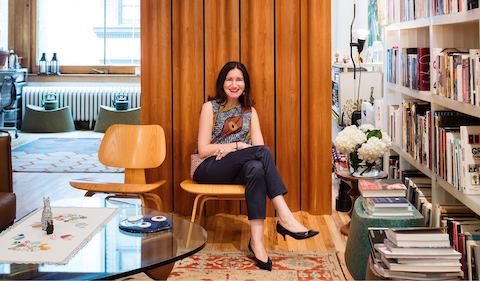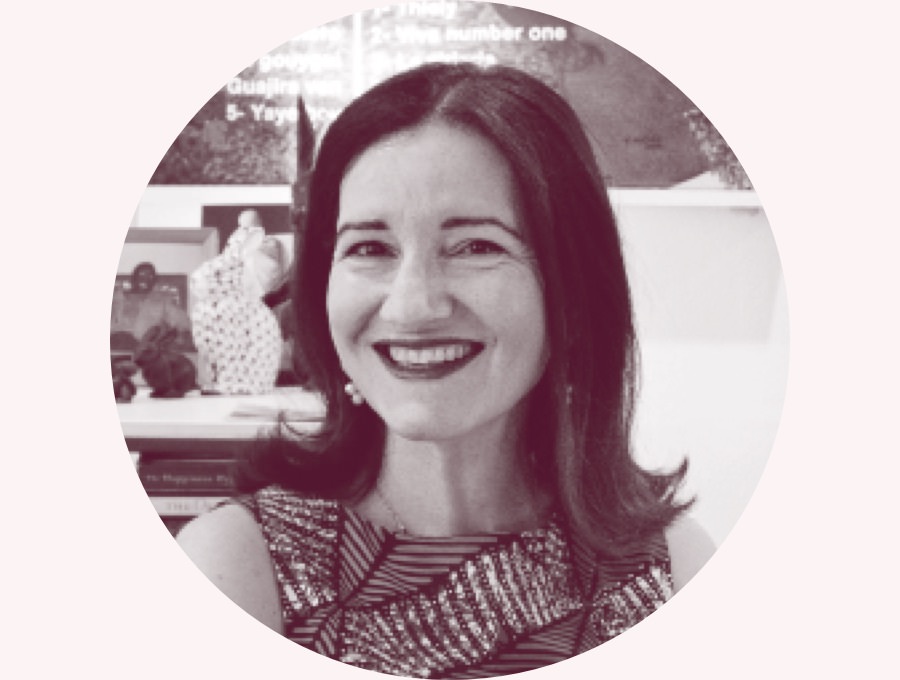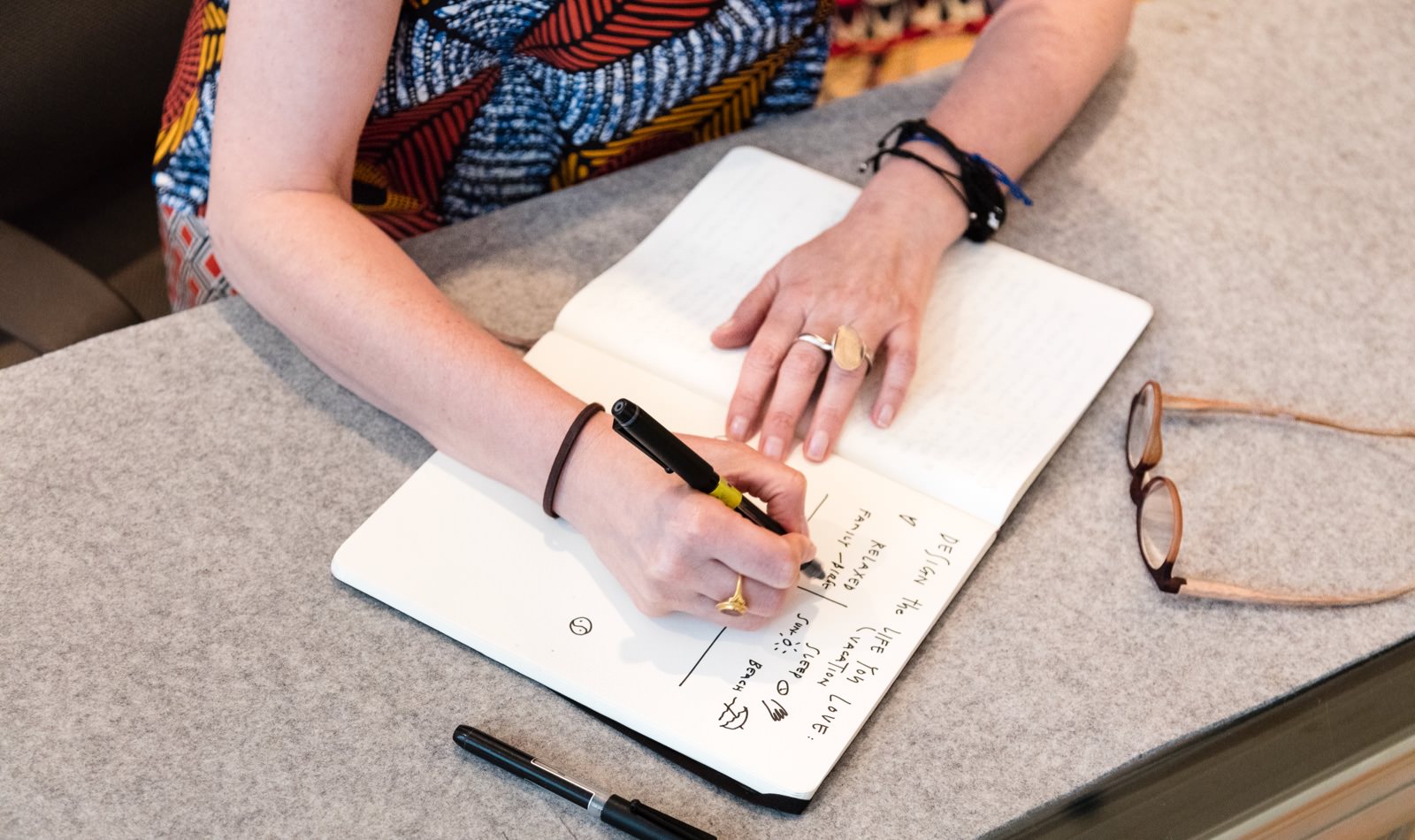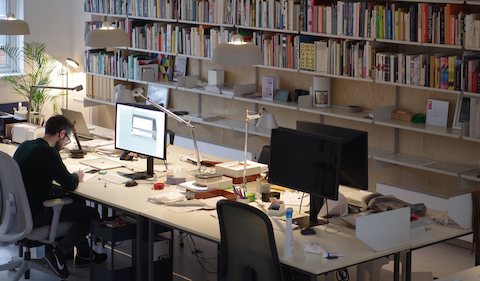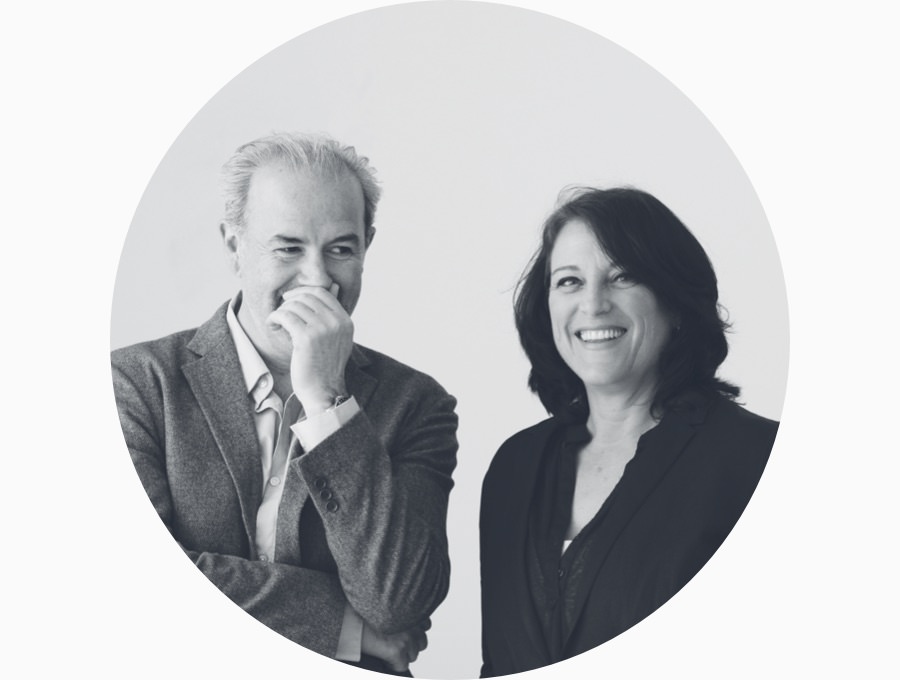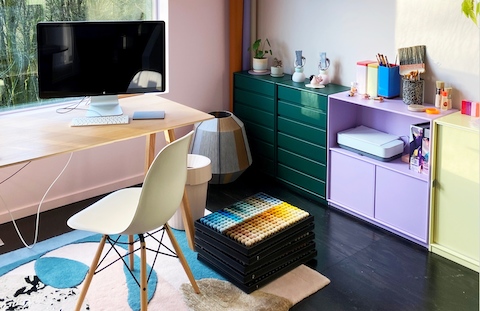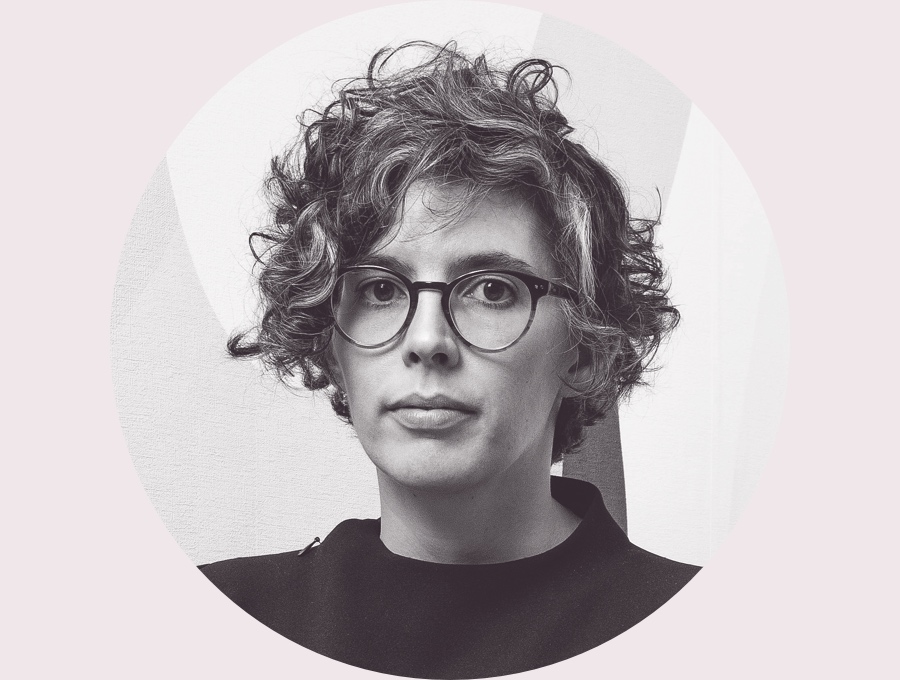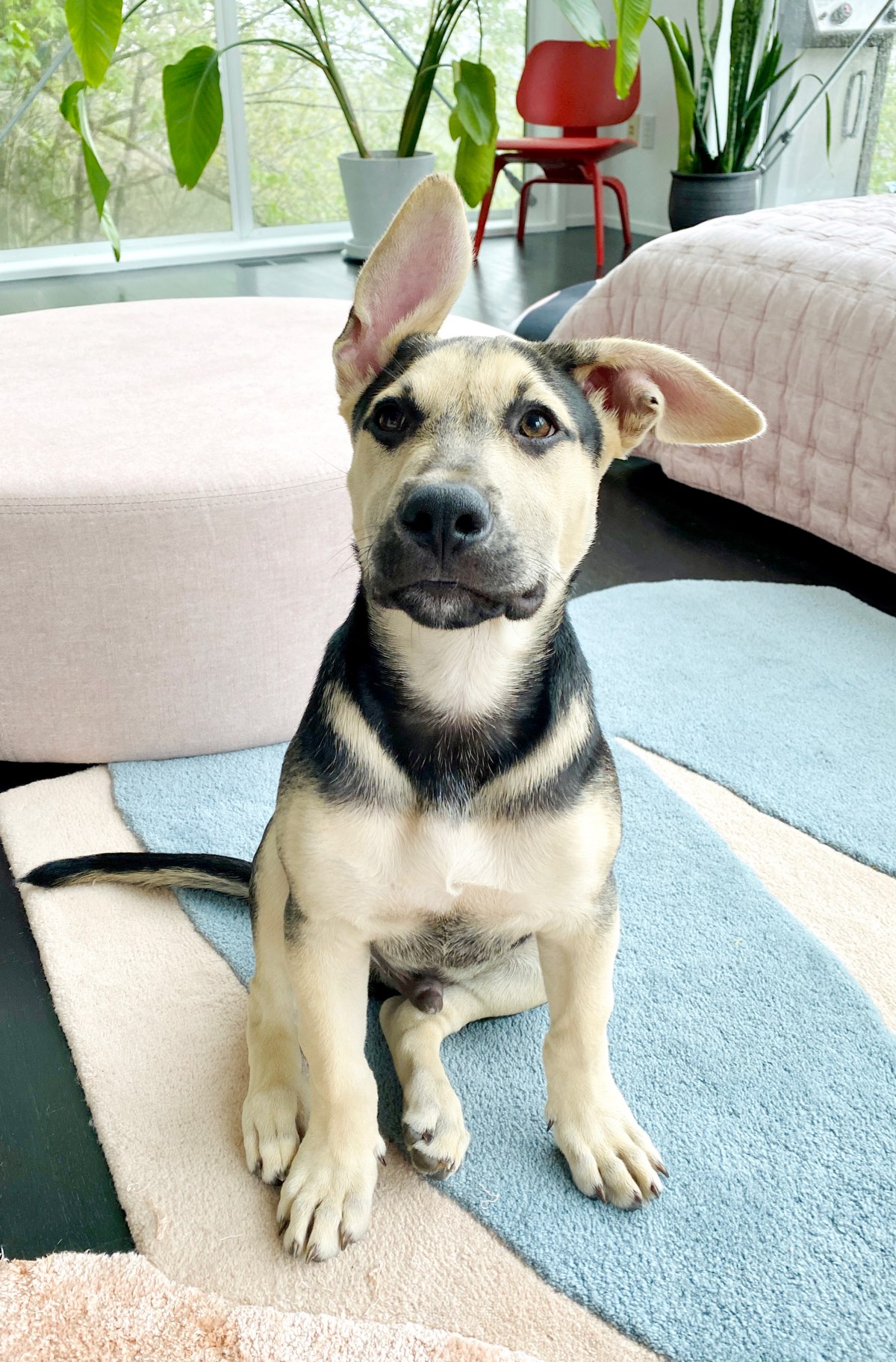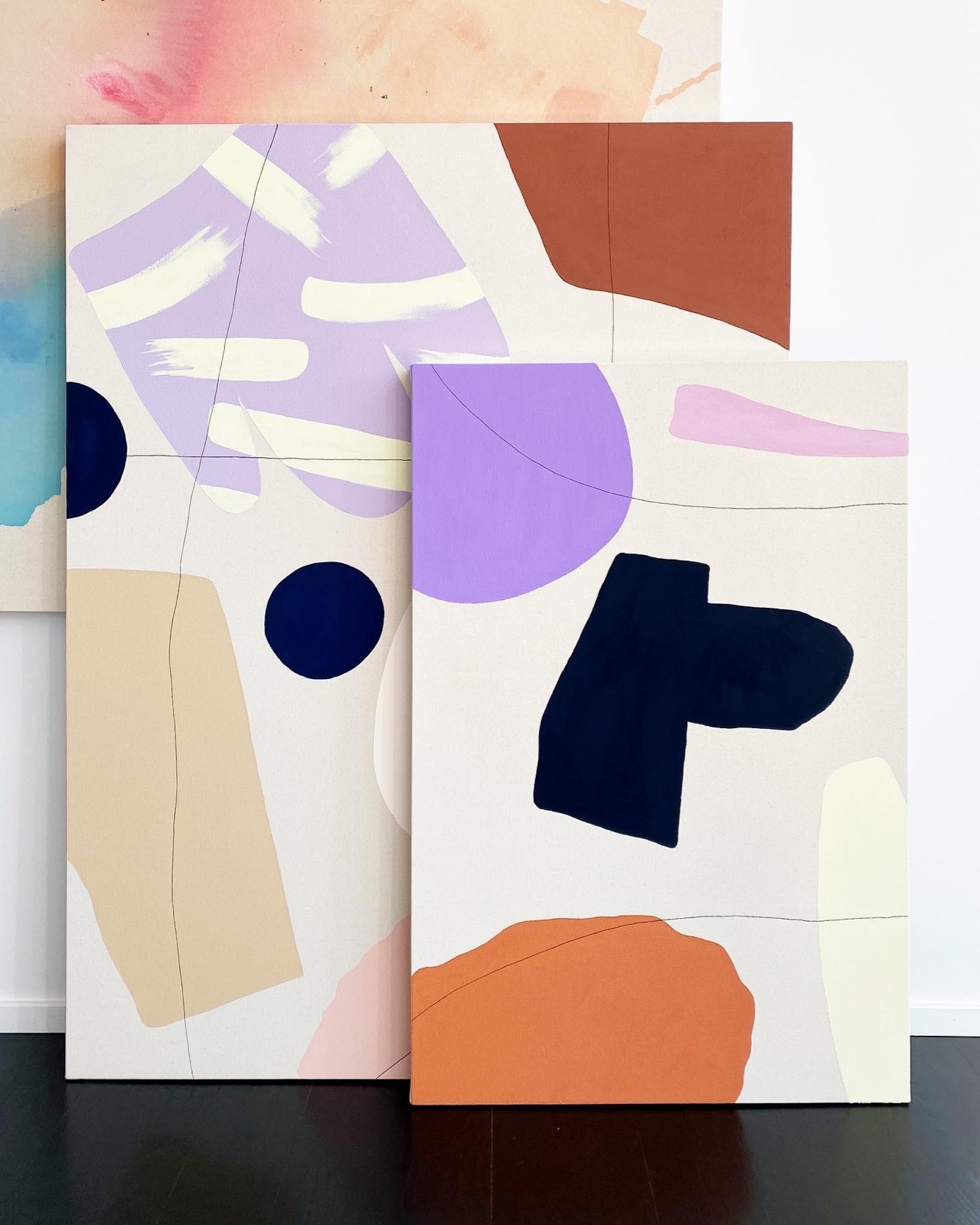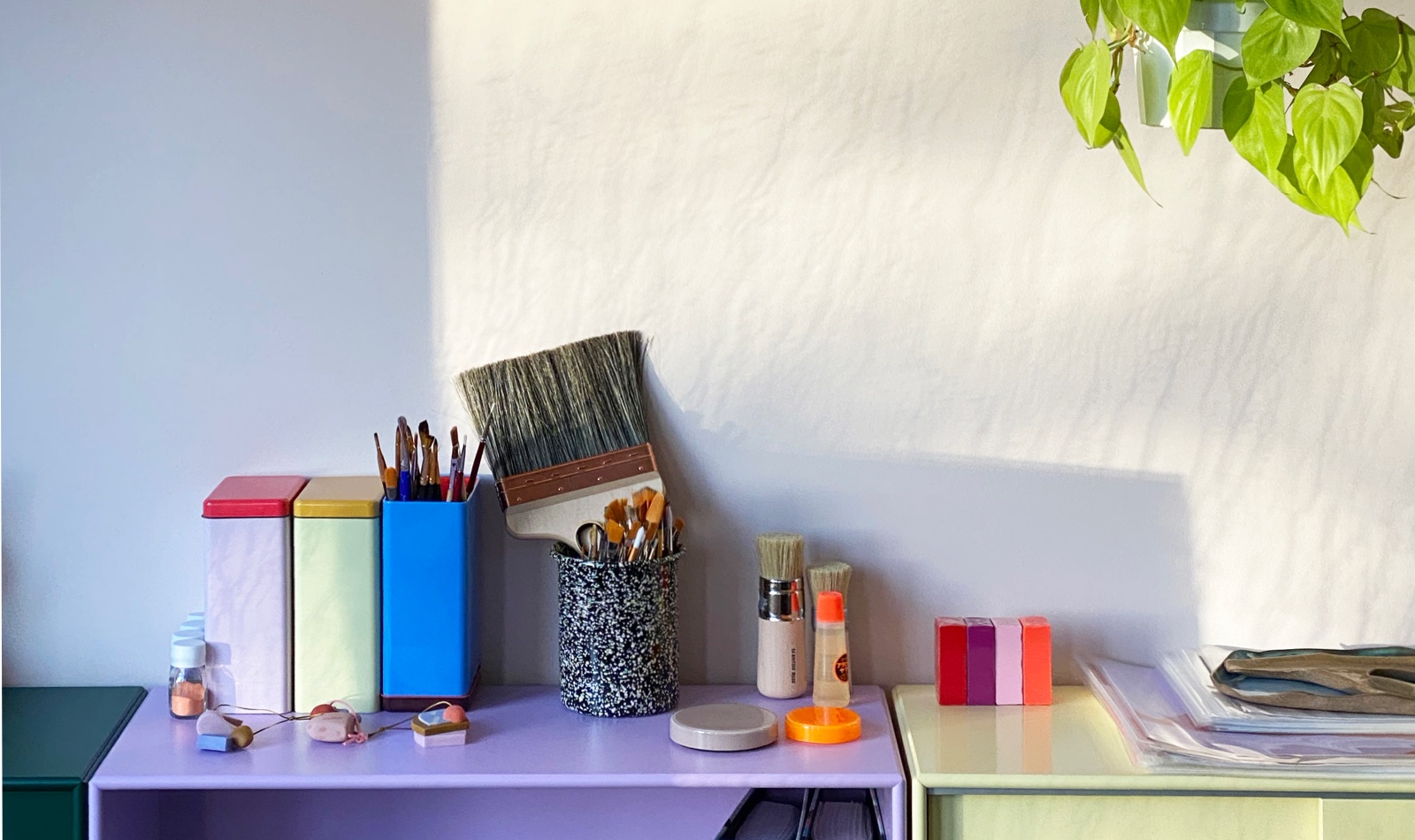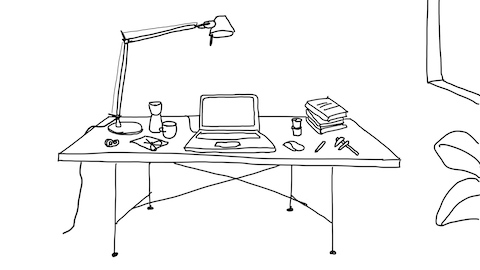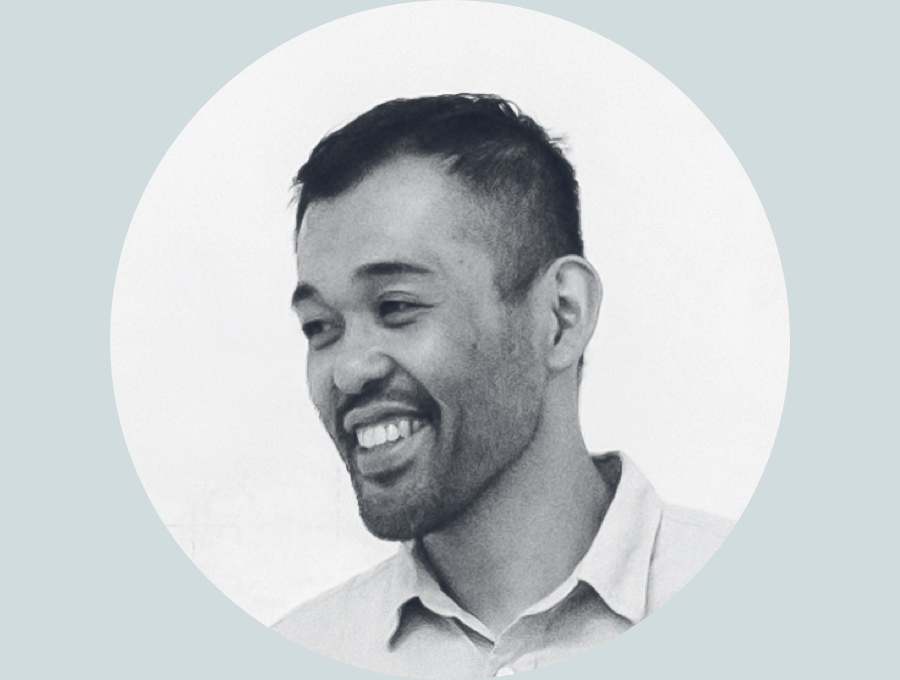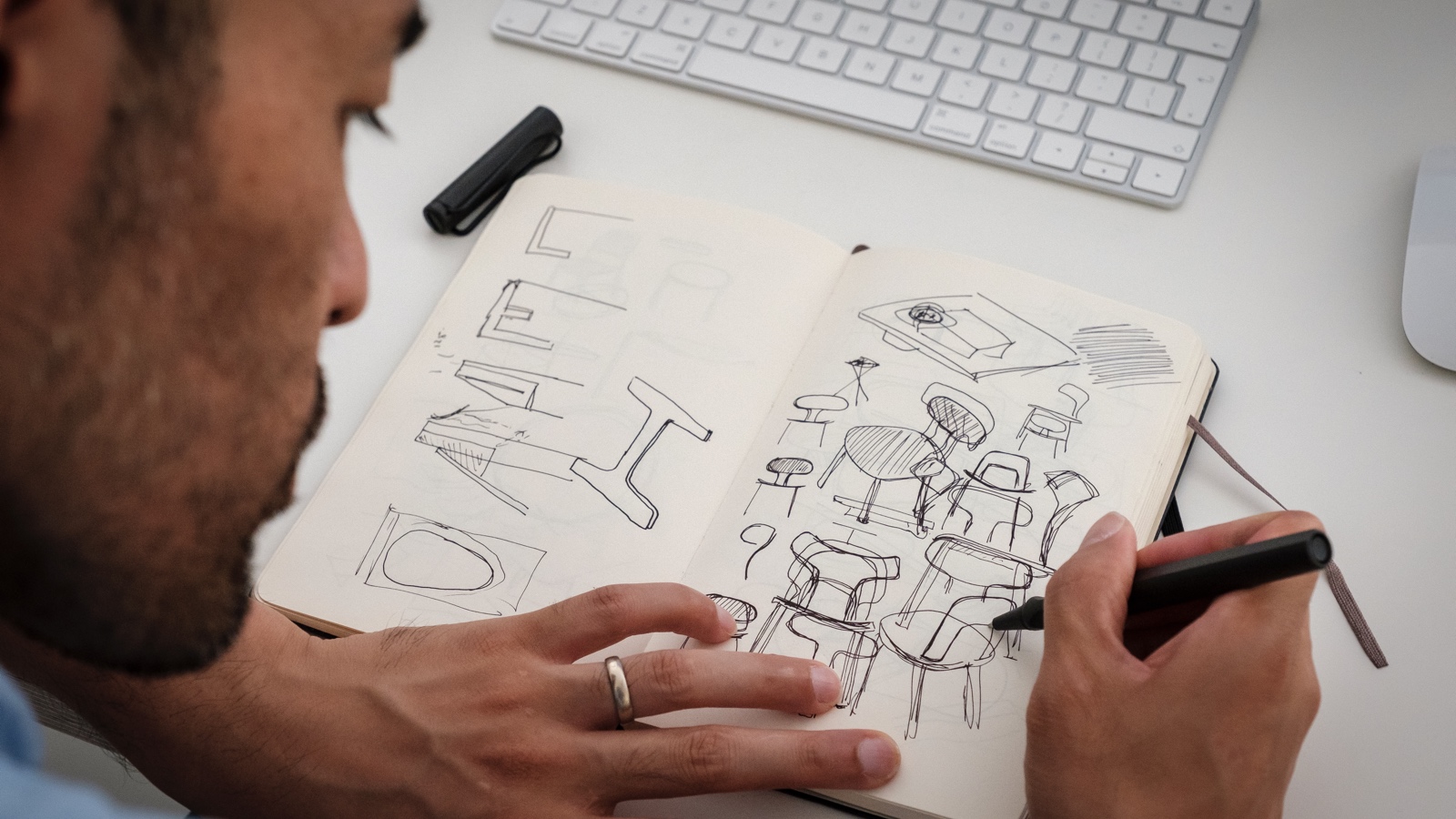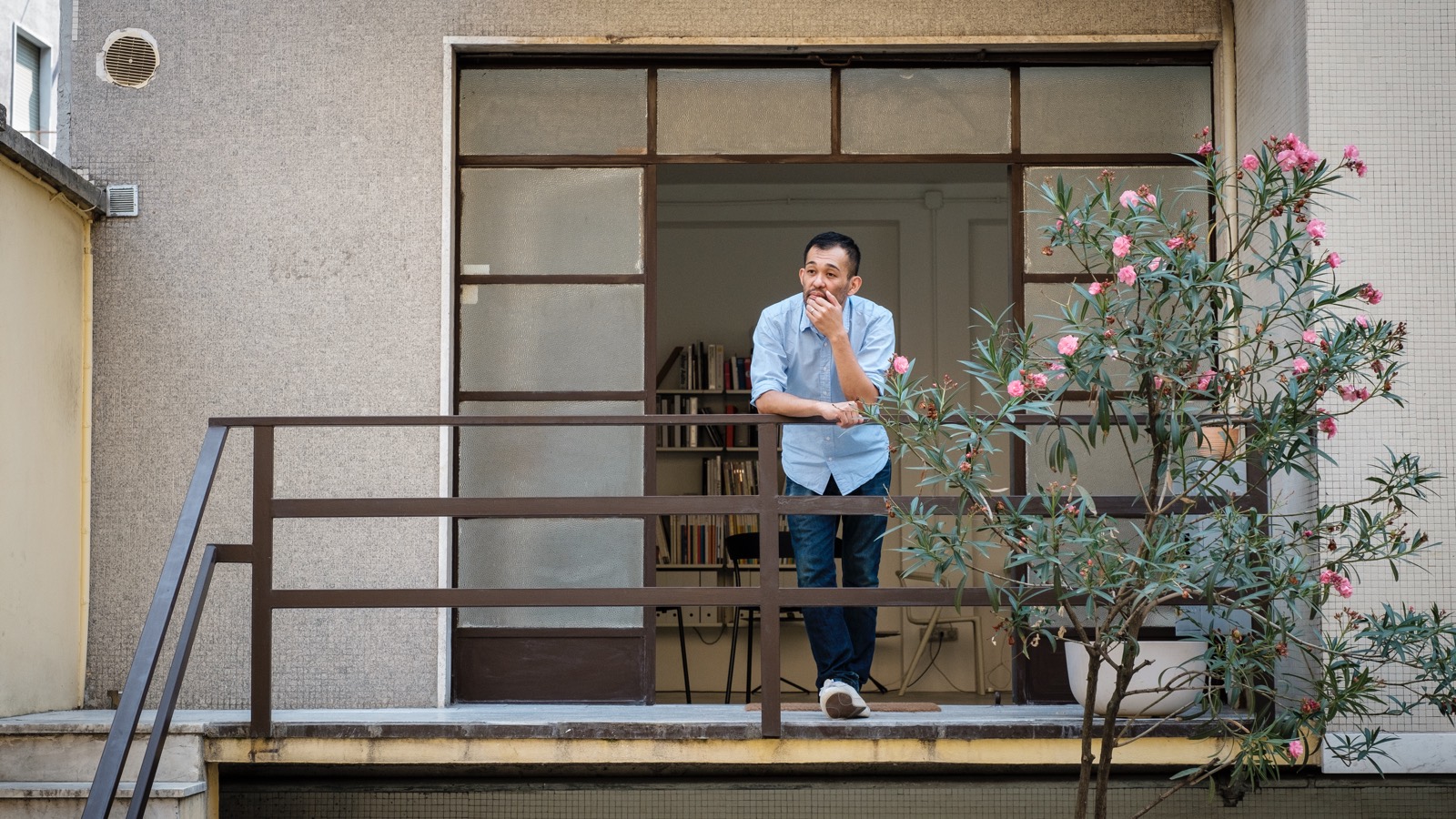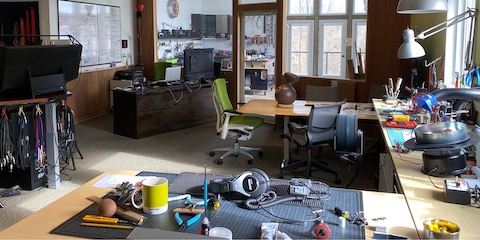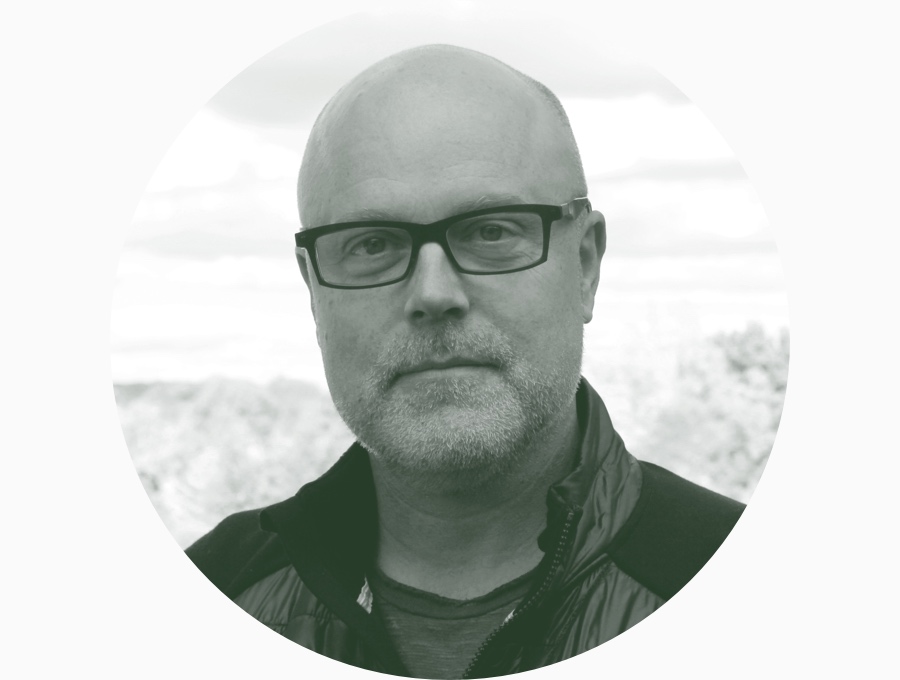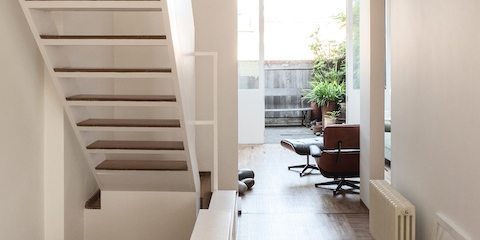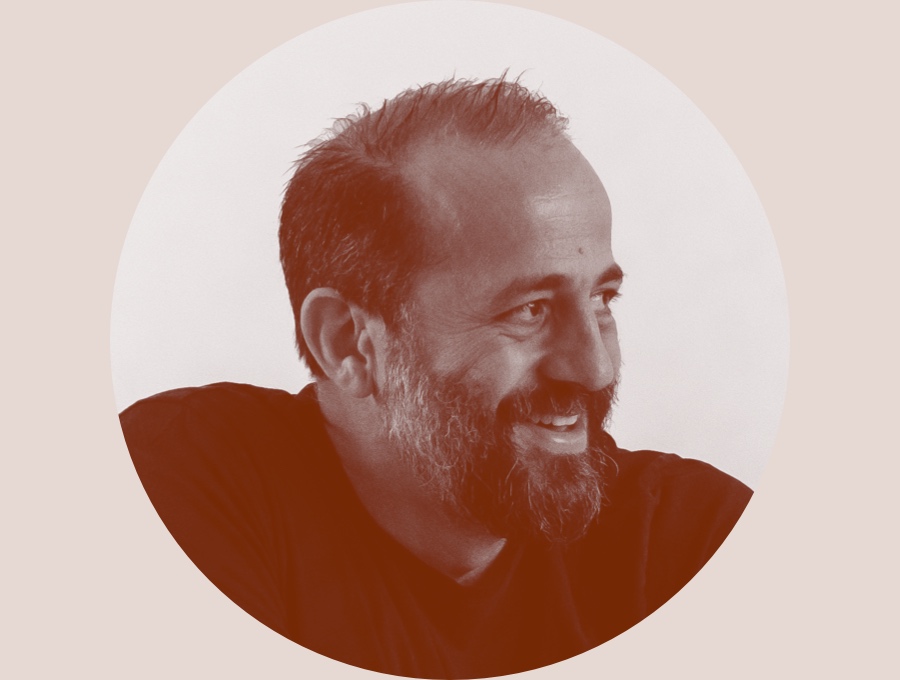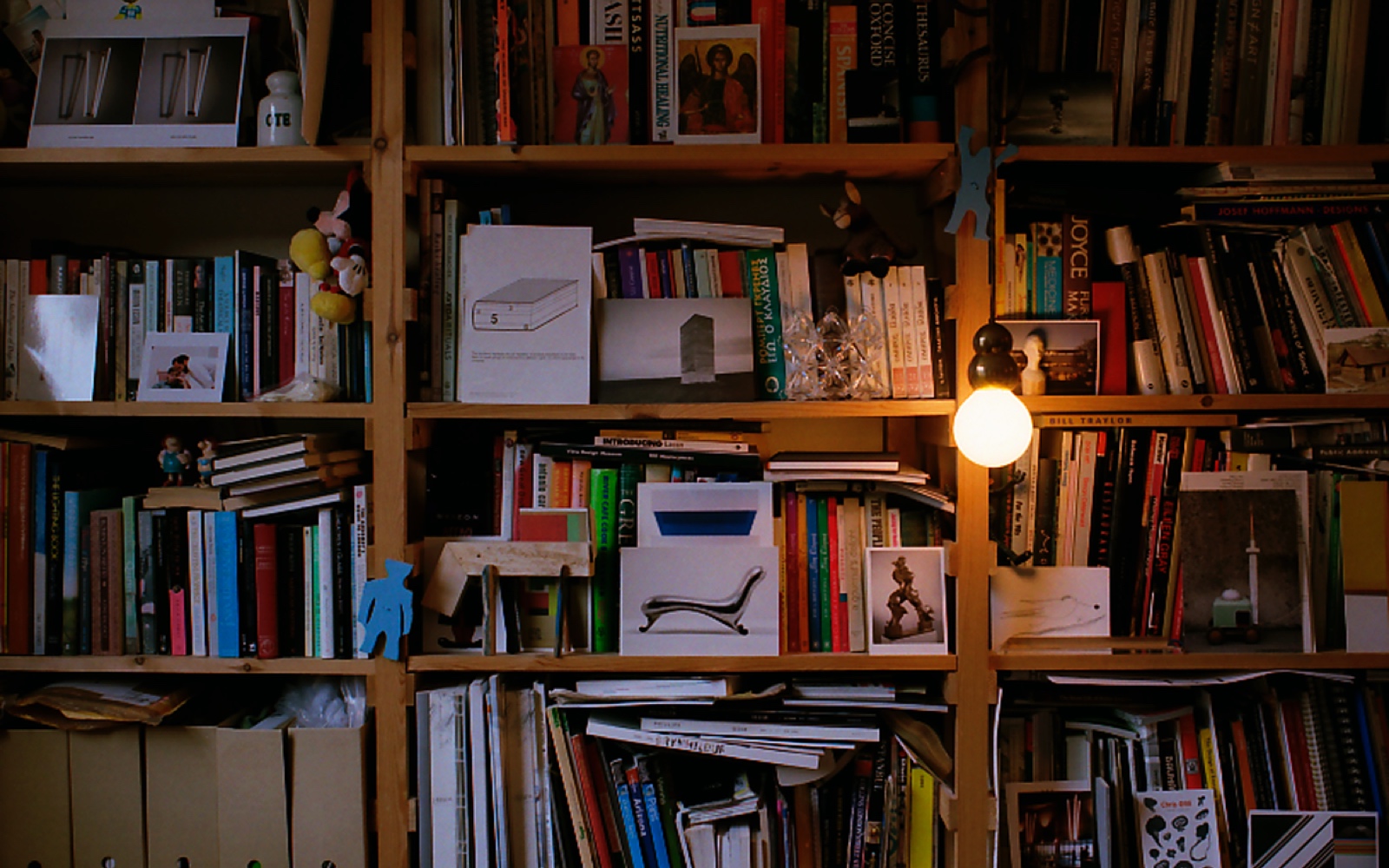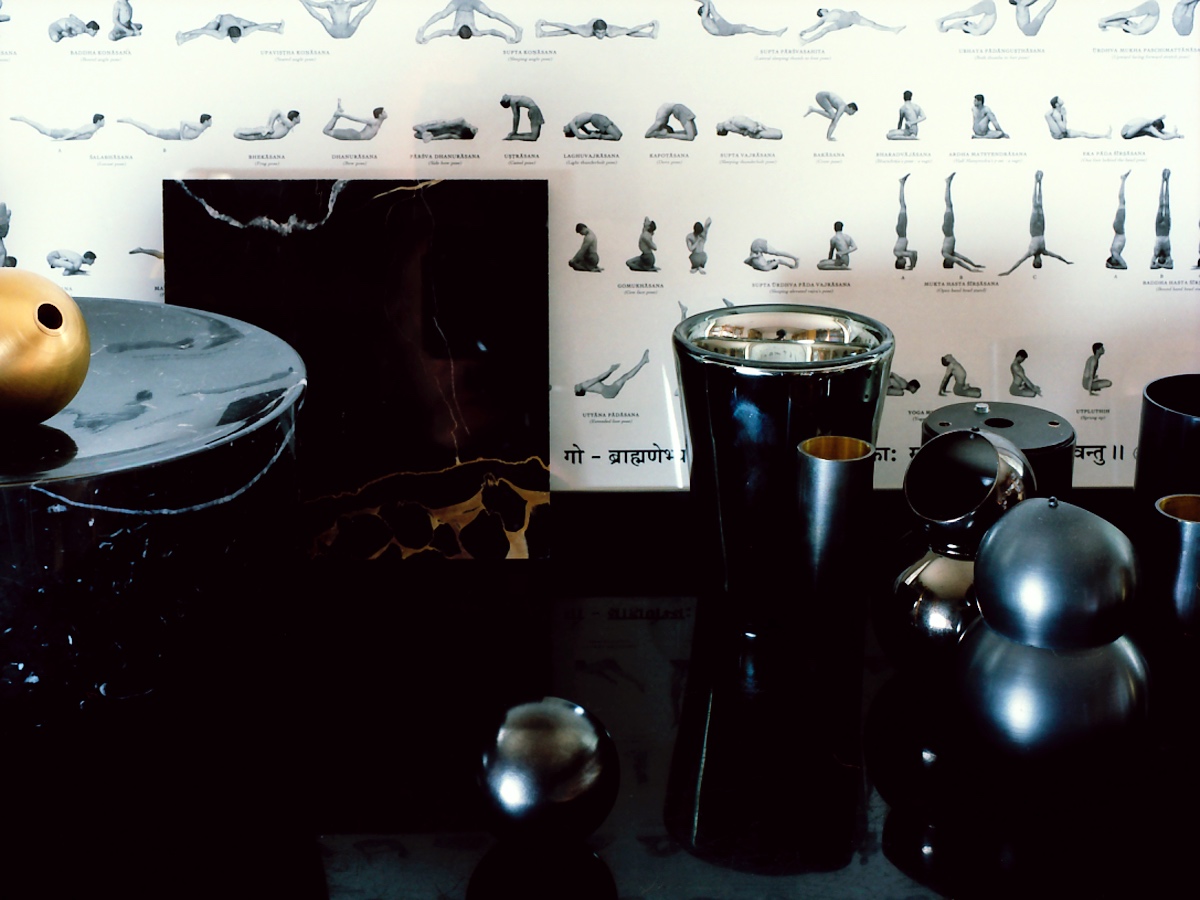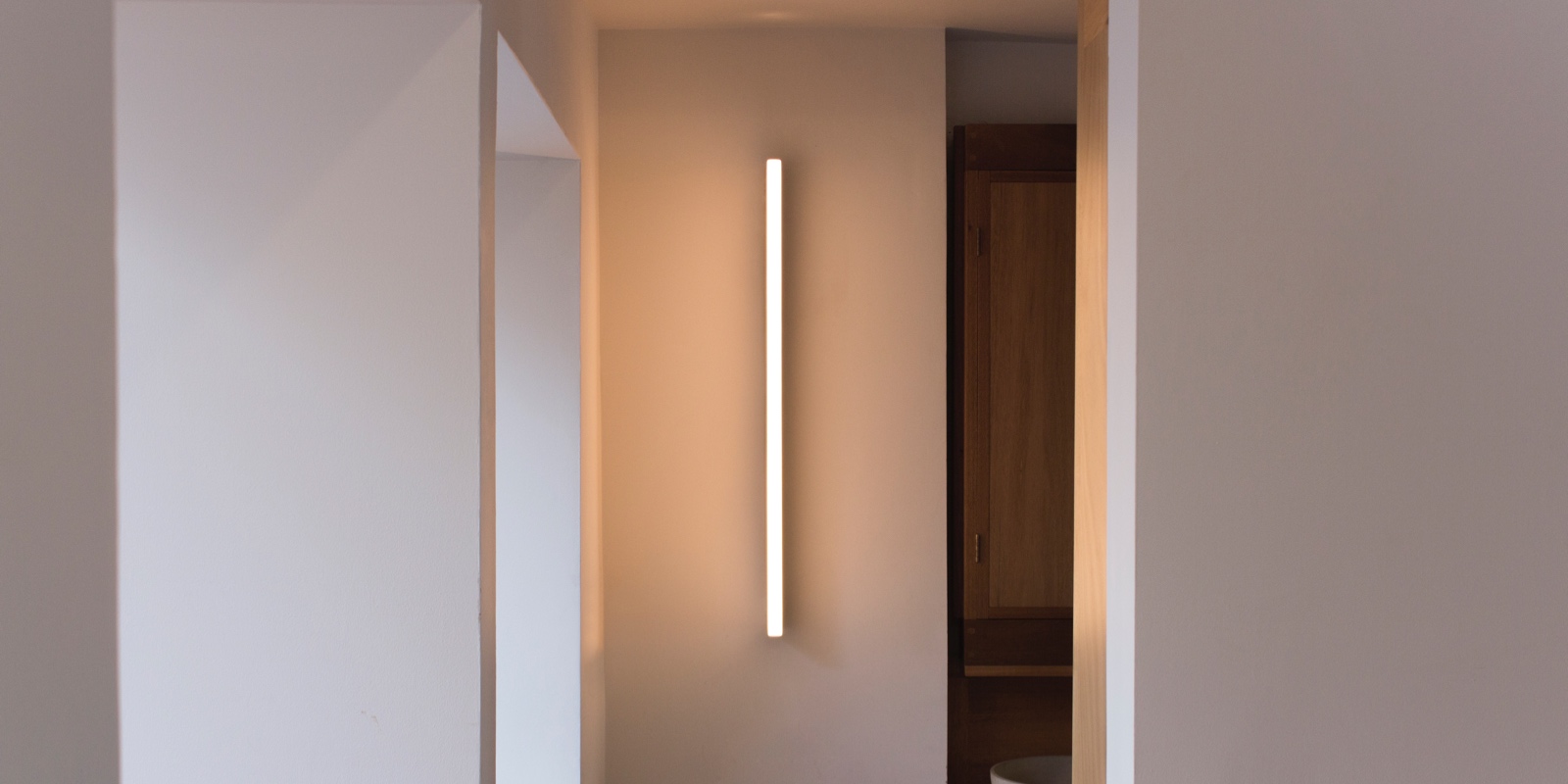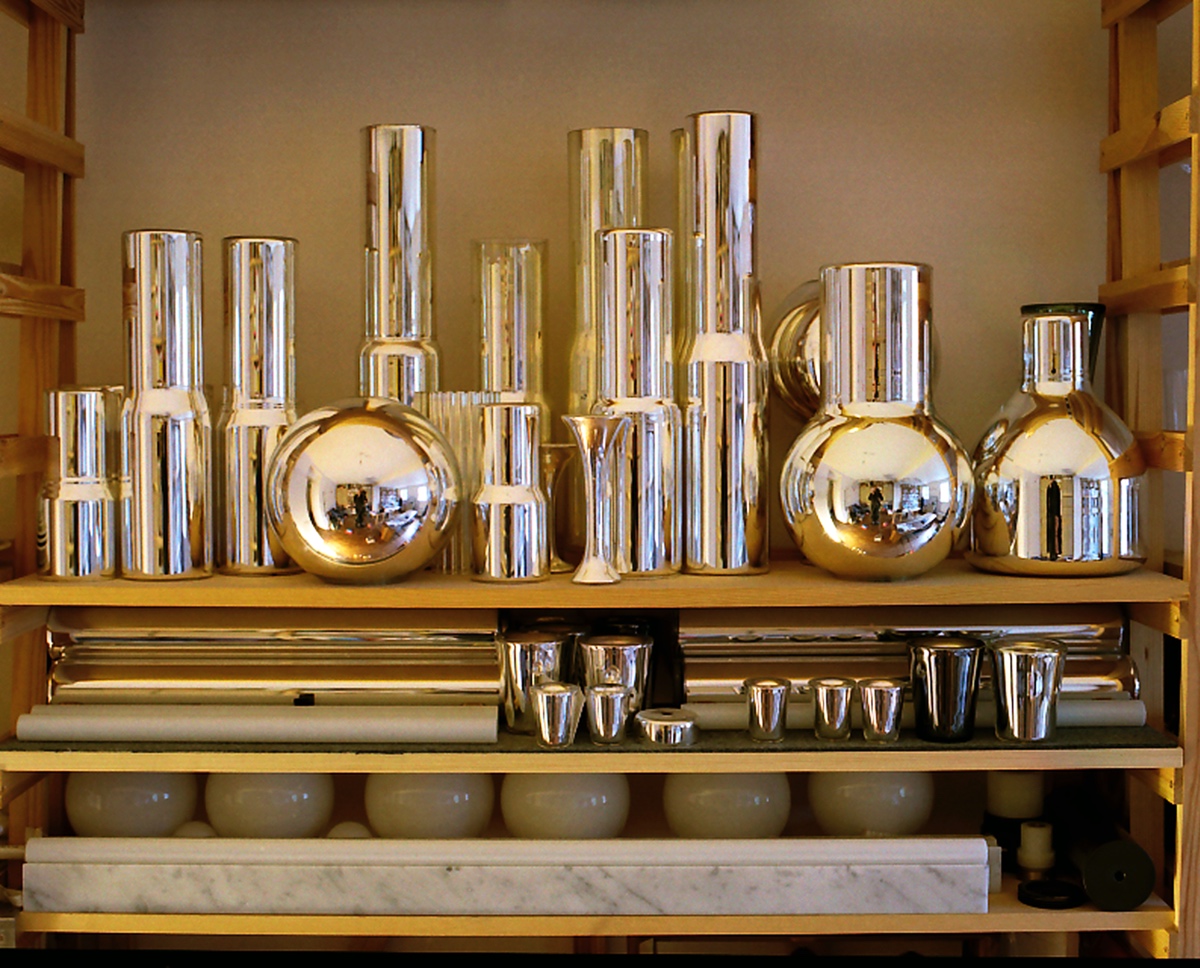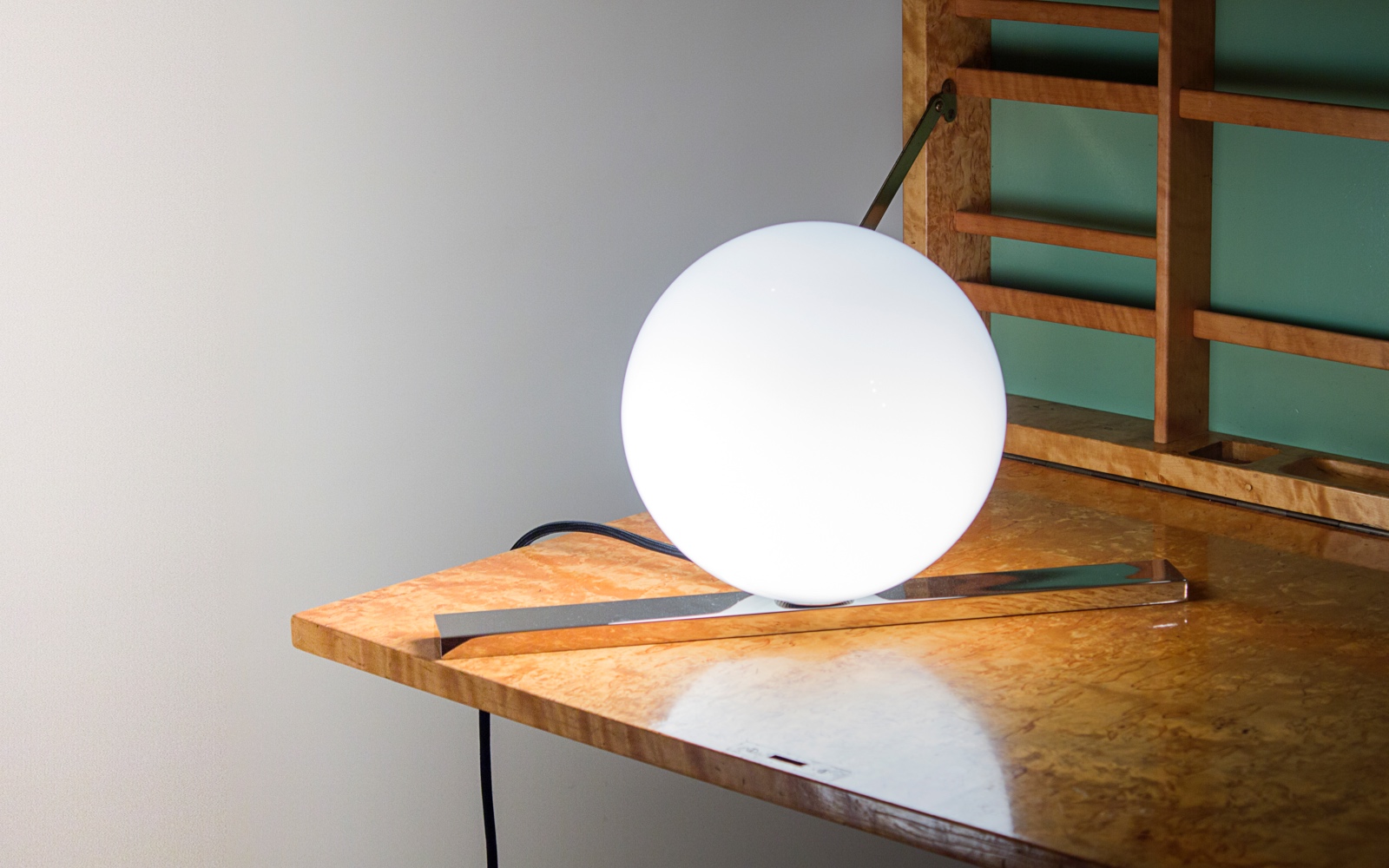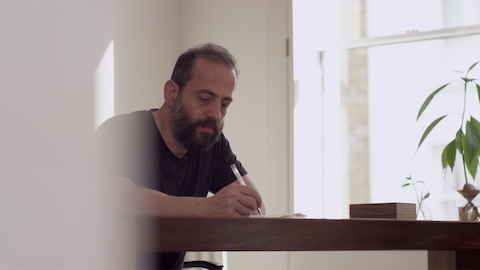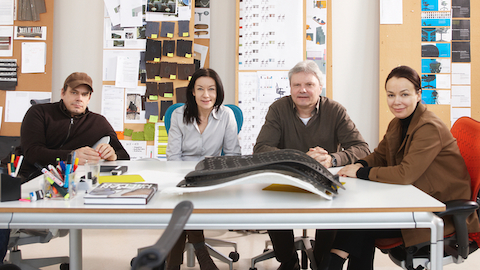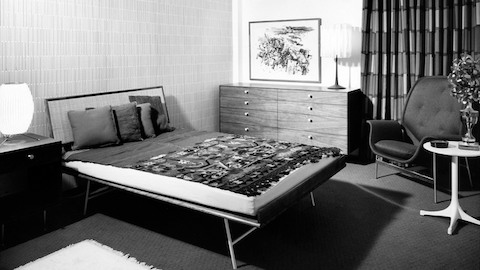Design at Herman Miller is an inherently collaborative activity. In a time of social distancing, however, how might designers continue to solve problems through a process so intrinsically social? We posed this conundrum to some of our favorite design partners. We’ll share their answers here as part of this ongoing series. Together, we'll all navigate this strange, uncharted territory from our individual homes and home studios.
Ayse Birsel often says that life is our biggest project. Working on that project in the midst of a pandemic and its resulting anxieties can be difficult, but the designer finds herself rising to the challenge. From her home in New York City (which doubles as the studio she shares with her husband Bibi Seck), the author, speaker, and designer is on a daily quest to embrace our current reality with optimism and empathy.
On the Present Moment
If someone would’ve told us even a year ago this would be happening, I don’t think we could’ve even started to imagine this crisis. But, being in the middle of it and acknowledging how difficult it is for many of us on so many levels, I also think it’s an incredible opportunity for rebirth and transformation. In design, constraints are opportunities, so I think we need to put our designer hat on and think like designers. Currently, we’re very close to it, so it’s hard to appreciate the opportunity. But the world is going to change, and I would like to think that it’s going to change in some positive ways.
On Finding Calm
One thing that I noticed is that I’m very much affected in a negative way by the news. So I’ve been practicing what a friend of mine calls “media distancing,” which has helped me greatly. The other things that help me get out of my head—to forget time and space and the situation—are drawing and thinking creatively. I also find it helpful to take time out of your day to make a list of everybody you love and send them a note.
On Connecting
I’m part of this community my friend Marshall Goldsmith created, the Marshall Goldsmith 100 Coaches. As soon as the crisis started, he started daily calls for anyone and everyone of our community who’s interested to join and talk. He said one thing that resonated with me: “Through these calls, if I can help one person ...” And I thought to myself, “Can I do that with my community—starting with Design the Life You Love?” And I also thought, “If I could just help one person ...” So then it started with 15 people, and now we’re about 50 people who meet up every Wednesday at 5 for a Virtual Tea. I don’t know if it’s helping anyone else, but probably the number one person it’s helping is me. Because it gives my week and days a sense of meaning and purpose.
On Balance
I've had so many conversations with people who are making time for working out, making time for calling family, making time for reading a book, making time for themselves—whether it’s meditating or napping. They never really talked about those things, let alone practiced them. I see, there’s this incredible intentional approach to asking: Is my life balanced? Did I work out today? Did I read something that inspired me today? Did I call my friends today?
On Laughter
One of the things that I realized I needed more of was laughter, and a friend of mine suggested that I start watching stand-up comedy. I started with Dave Chapelle. And I think he’s a genius. He says, sometimes we’re too close to things. It’s like being in a room with an elephant; if you’re right next to it, you can’t see that it’s an elephant…You need distance between you and the elephant to understand what it is. And he tells this beautiful story of Emmett Till and the Civil Rights Movement, and how if it wasn’t for this incredibly tragic happening in history, Civil Rights wouldn’t haven’t happened—or wouldn’t have happened quite the same way. He does a beautiful telling of that story which shifts your perceptions, and it makes you think. Right now, we’re too close to the elephant to see the good that might come out of this.
We reached longtime Herman Miller collaborators Kim Colin and Sam Hecht of Industrial Facility as they were both recovering from COVID-19. While their cases were relatively mild—culminating with an annoying cough and two weeks without taste or smell—the experience has already begun reshaping their views on the future. They predict a heightened awareness of health and well-being as design and society move forward.
Now that you’ve both recovered, what has been the biggest challenge for you as you transition back to work?
Sam: Probably the biggest challenge is that our process is far more analog than one would imagine. I am not just talking about drawing things by hand, but we constantly need to physically make things, and that is an iterative process—gradually allowing a design to reveal itself. Like any craftsperson, we need a model shop with machines and 3D printers. This cannot be replicated working from home on a laptop. We need to make one mistake after another—until there is rough equilibrium of desire and function, long before a client even sees our intention. These are important steps in the process.
So, to address the crucial nature of our model shop, we implemented a rota-system whereby only one of us can be in the model shop on any given day. This protects all of us and reduces virus transmissions to the community, while still allowing this analog creative act to take place. I can't deny that it continues to be challenging, but by supporting each other, it's manageable.
How are you compensating for the loss of meaningful impromptu interactions between colleagues when only one member of your team can physically be in your space at a time?
Kim: Impromptu interactions are important—absolutely. As Sam said, our process is often tied to mistakes. The mistakes reveal new directions and refinements. These sometimes remain mistakes until someone sees potential or even misreads them, and it’s not possible to replicate this so easily between people on schedule via video chat. Good ideas can’t be scheduled. I cannot think of one of our designs that has been created without lengthy, ongoing conversations. So at distance, working from home, we try to connect regularly and even informally, to capture some of the spontaneity that propels the thinking in the work through conversation. There’s a lot to talk about right now!
How does this larger problem we’re facing change how people view design as a whole? What are the new problems that designers will need to solve for the post-COVID-19 world?
Sam: This is not the first time we’ve been asked this question since the pandemic erupted. Design as a subject is all about moving into the unknown. I’m not talking about day-to-day design that generally is applying itself to solving immediate problems, but about absolute creative design that is not so much about solving problems, but providing opportunities—the problems to solve are large but they are nearly all self-inflicted.
This creative design is about stepping into the unknown, and this takes courage. Design needs courage. Design is a risky business. And through its entire history, Herman Miller has embraced risk and repeatedly stepped into the unknown for the benefit of society. What are the new opportunities? How can I remain healthy in a small space? Isn't the purpose of an office really to meet with colleagues and exchange and discuss?
Kim: Right now, in this crisis, design is mentioned in a rather small way, when creatives lend their 3D printers to provide small scale shield manufacturing, and/or these 3D files are refined and made available for public use in a time of PPE shortage. What we don’t yet know is whether design is being integrated with any immediacy into the larger scale work that is needed. For instance, when there is widespread testing and/or vaccination, will design be asked to contribute?
I hope that design is engaged when time is critical and at-scale demands are ever faster. It’s important to involve design even when time is pressed. Looking beyond the immediate crisis, our awareness of health and well-being will be heightened in all kinds of situations we hadn’t focussed on as much previously, making things very interesting for designers.
Alex Proba first came to our attention in 2016 when Sight Unseen named Studio Proba to its American Design Hot List. Since then, the German-born multidisciplinary designer has relocated from Brooklyn to Portland, but her work—particularly commissions for murals—has continued to take her around the world. Now that the pandemic has put much of that on hold, she’s been connecting with loved ones, caring for a new puppy, and setting daily goals to stay productive.
The past few weeks have been quite a surreal time. How are you managing to stay productive?
Most of my projects involve travel, so they’ve either been cancelled or postponed. But I’m still trying to keep busy designing and challenging my creativity. I feel like we all need to try to stay positive for the world around us. Of course, that’s easier said than done—my whole family is in Germany and it’s been hard to be so far away from them, especially since my parents are doctors and I’m incredibly worried about them.
I like to think that we could use the time we spend isolated and scared to try to work on projects we always wanted to do, but never had the time. Let’s look at this time as a gift. Let’s do things that make us happy and that might make someone else happy as well.
My daily routine is to check on family and the news, then pick one thing each day to work on, which somehow goes back to my daily “A Poster A Day” project I did for four straight years many years ago. Obviously, this isn’t possible for everyone for various reasons—time, work, kids, sickness, money, food, etc. We’ve also just adopted a little rescue pup from Texas, and he is keeping us quite occupied as well.
What are some tips you might share for staying productive at home?
Choose at least one project/task every day—ideally the night before—to achieve or to work on. I believe that making a plan and knowing what to do is the key to actually doing it. Waking up in the morning with no plan is even worse in times like these, as the days blend in together and not much changes. You can choose to change that by setting a goal the evening before.
How are you balancing relationships—personal and professional—now that all facets of life and work are taking place within the home?
So many video chats! I start my day by catching up with my family in Germany; we’re nine hours behind them in Portland. Then later in the day, I might catch up with my friends in New York City. I must admit, it’s very hard and some days I feel overwhelmed and only send a few texts. I am fortunate to be able to stay home with my partner and our puppy, and not be completely alone as some are. Being together is everything now. We also love being together and haven’t had a fight this entire time—which is wonderful and makes it so much better.
Creativity is often propelled by impromptu interactions with others. How do you try to capture some of that organic collaborative interaction when working separately from your team?
I agree that creativity comes from a collective mind—or at least gets better because of it. I am a big proponent of collaborations as people with different skill sets come together to create something greater than you ever could by yourself. This is obviously harder now as we are all staying at home, but we are immensely lucky to have the technology to be able to communicate with each other.
No matter where we are, we’re able to see each other digitally as well as collaborate together on projects with programs like Figma, Keynote, and Adobe. If we all were stuck like this 10 or 20 years ago, none of the ways we're able to bridge these distances would have been possible. Although everything seems so far away right now it’s actually closer than you think.
Obviously, some projects are just not possible at this time—for example, projects in stages when you have to pick materiality and texture, etc.—but these will just have to wait for a little bit.
Has any of this prompted you to start thinking differently about your work or what it might look like in the future?
As I said, most of my projects, such as murals, have been postponed or cancelled, as I would need to travel to complete them. Also, the production of my home goods and other products have been paused, since most countries have lock-downs or stay-at-home orders in place.
I am trying to stay positive. I am hopeful that some projects will come back once the world has healed. We will all have to shift gears, strategize, and become even more creative in how we work. We will have to focus on the things that matter most. A lot of people are already out of work, so we all just have to try to help each other and be strong together.
The cancellation of Milan’s 2020 Salone del Mobile furniture fair was an early signal to the global design community of just how hard the pandemic would hit Italy. For Milan-based designer Keiji Takeuchi, staying productive—we won’t say “positive”—during the ensuing nationwide lockdown has meant slowing down, being more intentional, and taking up baking.
With the Italian economy starting to reopen, what is the mood like in Milan?
Even in such a heartbreaking situation, there is still beauty. I think of the Music for Hope project, and Andrea Bocelli singing “Amazing Grace” on Easter Sunday outside the Duomo Cathedral. What Milano as a city and the Duomo created to support our citizens and also people in different parts of the world represents the power of art that this city and this country believes in. I felt this was truly amazing—and also, so Italy.
How have you managed to stay creative during the lockdown?
The most important thing for me is to think of how to adapt to the situation rather than focusing on what I do not have here with me.
With creativity, anything is possible. The other day I sculpted some design models with our daughter’s modelling clay. For quick maquettes, we also used a dough that we made by mixing some flour with water.
When you are working on a project alone at your home studio, what are you doing to involve others in your design process?
This period is giving me an opportunity to take things slowly—to “cook” design more slowly. So I am now taking more time to think and question myself.
I find that I’m drawing a lot more before jumping to the computer. And I am asking my assistants to focus on research and experiments rather than building shapes on computers. We can wait to build the shapes for now, but gaining knowledge is always welcome.
What are the benefits of working remotely?
I think a team will learn to minimize ambiguity when communication no longer has physical cues to rely on. We need to grant each other grace, but at the same time, we can't necessarily tolerate misunderstanding. Two people may have two different understandings of the same word. So when we are explaining a concept to one another, we need to work toward a common understanding—to picture the same word in the same way.
At the same time, when multiple people can envision the same goal, the energy is so powerful that physical distance becomes less relevant.
What tools do you use to stay connected with your team?
We use a lot of hand-drawing sketches in group chats, which allow us to collaborate quickly, in real time. I’ve found it is also a softer tone of communication.
What are your best tips for staying productive at home?
If we think of ourselves as being locked down, our thoughts are already pointing in the wrong direction.
I certainly understand that there are many unfortunate victims, so I don’t want to minimize that by saying “stay positive.” But working to comprehend the situation rather than complaining about the situation is the most respect we can pay to our society.
When we believe in making the situation work, we will see that there are many opportunities for us to appreciate—like spending more time at home. Many people may have found innovative ways to stay connected with their family and friends. So in a way, maybe social distancing is actually bringing people closer at heart.
How have you been using your time outside of work hours?
Cooking has always been my passion, and I’ve started baking as well. It is a source of happiness and peace for me to make something to share with the family.
How—if at all—will this crisis change your approach to design?
After this is over, I don’t think we can even think about approaching design in a traditional way. I feel that the role of designers will be impacted in both large and small ways, and we just need to be open enough to accept the situation and to react to it. I hope we can be purposeful enough to rethink our role and to be resourceful enough to support different industries.
Industrial designer Brian Alexander is a thoughtful observer of human behavior—including his own. He has been working from home since 1998—the year he founded his studio. His natural inclination to watch, hypothesize, test, and reassess has led him to iterate on his own work-from-home patterns and places over the years. His thoughts on how to maintain creative flow and collaborate while working from home hold lessons for anyone struggling to work in isolation.
Start with Stillness
Objectively do an internal inventory of your work life up to this moment. The point of this is not to make a to-do list, but to get your bearings and center yourself. It’s up to each of us to sort our own paths. But we can’t do that if we don’t know our own triggers or have a general portrait of our work lives.
Practice Contextual Displacement
For many, home is the “off” button for work. You are surrounded by all the objects and cues which represent down-time or other activities which normally counter work life. A general sense of fatigue and frustration builds because the experiential cues of home haunt you. It’s a little like mixing complementary colors. If you maintain some separation it can be a powerful addition. If you mix too much, everything goes gray.
Designate a Workspace
If you already had a home office, you’re good to go. If not, designate one. However minimal or grand, lay claim to a spot in which you feel you can do your best work. Maintain that location for that purpose. When you leave that location, you are no longer at work. Don’t underestimate the power of closing a door or throwing a sheet over your desk to suddenly feel at home again.
Reference Existing Patterns
Whatever your previous work experience was, try adopting the associated behaviors and routines from being at the office. For many the start of the day is more critical than the end. Wake up at a consistent time. Follow the same pattern you usually do to prepare for work, but introduce a few new minor variations. Make some coffee, walk around the block, come back, go to your work spot, and proceed with your day. These patterns can function as primers to get you in the frame of mind most beneficial to work.
Mind Your Relationships
Years ago, you probably had a shot of your family vacation pinned up in your cubicle. Now the same imagery is your wallpaper or desktop background. When you close an app or start a meeting, there’s a little bit of you-ness exposed in that moment. We appreciate that as fellow humans. So stay connected in whatever form you can.
COVID-19 has hit London hard. Its design community, from indie fashion designers to global design brands, will continue to feel its effects for the foreseeable future. For London-based Michael Anastassiades, the stay-at-home guidance from the UK government has prompted more planned interactions with his team and a revival of his yoga practice.
Have you made any changes to your daily routine to help keep you productive at home?
I rediscovered my yoga practice, as none of my other forms of physical exercise are possible during the lockdown. Having the discipline to start your day with something as rewarding as yoga helps your mind see things in a positive way and stay productive.
I used to teach Astanga Mysore classes for 10 years, and only stopped a year after I set up my lighting brand in 2008. My studio was still based at home, and I had designed all the furniture to be easily dismantled and stored against the walls to make space for eight yoga mats for my regular students two evenings a week. Everything was organized on floor-to-ceiling Enzo Mari shelves that I had made, and we used to practice yoga surrounded with all my early design experiments and material samples.
Now that you are surrounded by those objects in your home 24/7, do you find the same value in living with these design experiments?
My home has always been the best platform for me to create and live with my own work. It has become a very dynamic space where things come and go, but it is nice to see some objects remain a permanent part of the setting. I've always believed that before you can expect someone to live with an object you’ve designed, you have to try it out first.
How are you staying creative during the lockdown?
My sketchbook remains the most precious tool for me to connect with my creative thinking.
How has the new distributed nature of your studio affected your creative process?
The new studio in Camden is one big space we all share without much privacy—other than our own concentration. Working on a project has become an organic process that shifts between people and evolves through a constant exchange of sketches and spontaneous model-making. Working remotely means that that these interactions are now much more planned. It’s very different.
When we eventually emerge from this, how will your work or work processes be permanently altered by it?
For as optimistic as I would like to be, it is difficult to predict what the real impact on the world will be. As designers, we have a duty to be adaptable and to continue to think creatively.
What is the role of designers in response to a crisis of this magnitude?
As designers, we need to become more thoughtful. And as people, we need to learn to operate from a place of generosity rather than one of greed. Shocks to the whole world, like the one we are living through, are important moments to reflect on real values.
